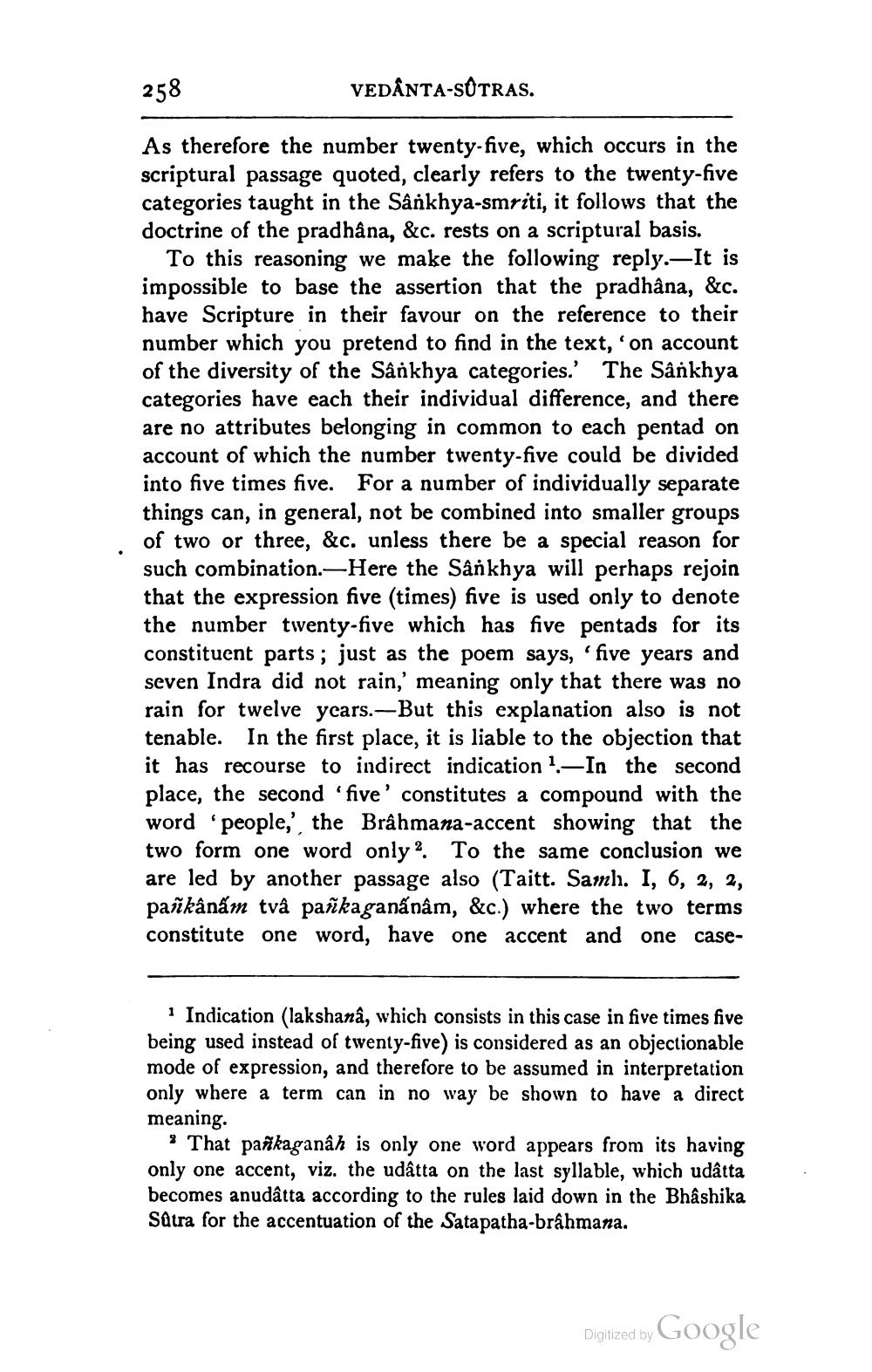________________
258
VEDÂNTA-SOTRAS.
As therefore the number twenty-five, which occurs in the scriptural passage quoted, clearly refers to the twenty-five categories taught in the Sankhya-smriti, it follows that the doctrine of the pradhana, &c. rests on a scriptural basis.
To this reasoning we make the following reply. It is impossible to base the assertion that the pradhâna, &c. have Scripture in their favour on the reference to their number which you pretend to find in the text, on account of the diversity of the Sankhya categories.' The Sânkhya categories have each their individual difference, and there are no attributes belonging in common to each pentad on account of which the number twenty-five could be divided into five times five. For a number of individually separate things can, in general, not be combined into smaller groups of two or three, &c. unless there be a special reason for such combination.—Here the Sankhya will perhaps rejoin that the expression five (times) five is used only to denote the number twenty-five which has five pentads for its constituent parts; just as the poem says, 'five years and seven Indra did not rain,' meaning only that there was no rain for twelve years. But this explanation also is not tenable. In the first place, it is liable to the objection that it has recourse to indirect indication 1.-In the second place, the second 'five' constitutes a compound with the word 'people,', the Brâhmana-accent showing that the two form one word only? To the same conclusion we are led by another passage also (Taitt. Samh. I, 6, 2, 2, paskânám två pañkagananâm, &c.) where the two terms constitute one word, have one accent and one case
i Indication (lakshana, which consists in this case in five times five being used instead of twenty-five) is considered as an objectionable mode of expression, and therefore to be assumed in interpretation only where a term can in no way be shown to have a direct meaning.
? That pankaganâh is only one word appears from its having only one accent, viz. the udâtta on the last syllable, which udâtta becomes anudatta according to the rules laid down in the Bhâshika Sätra for the accentuation of the Satapatha-brahmana.
Digitized by Google




